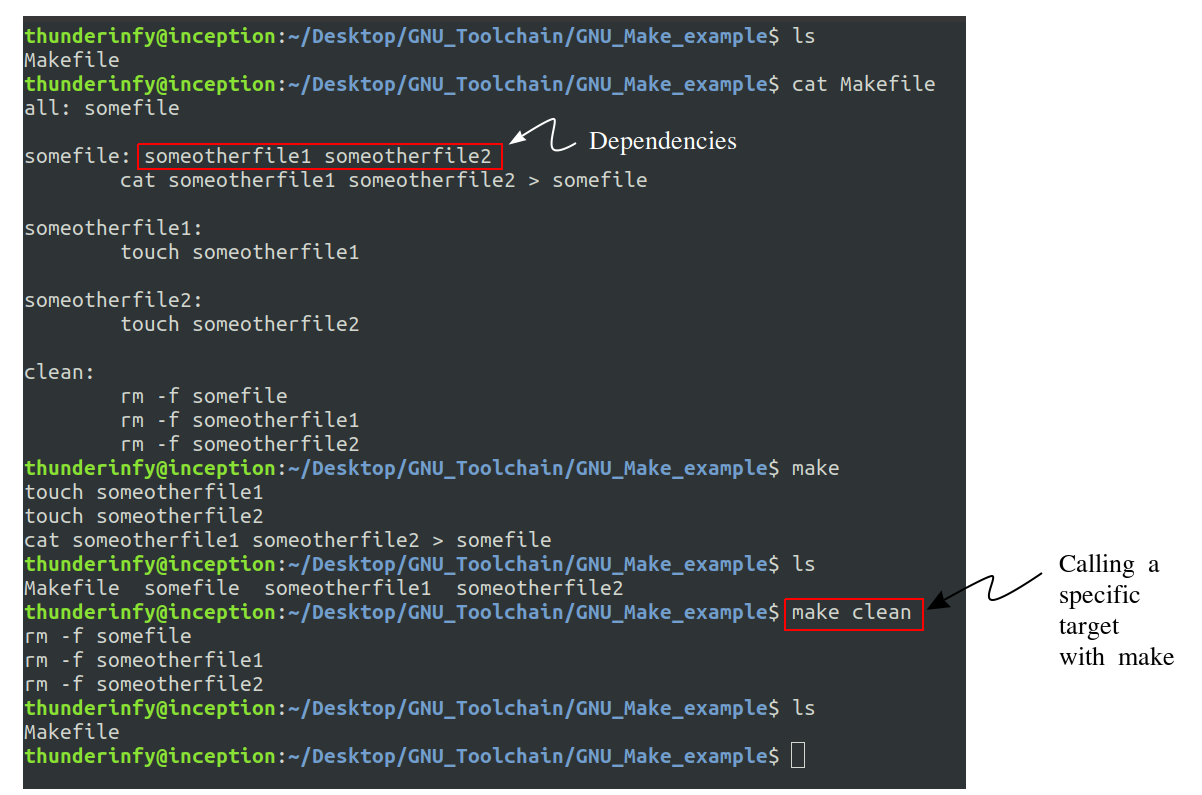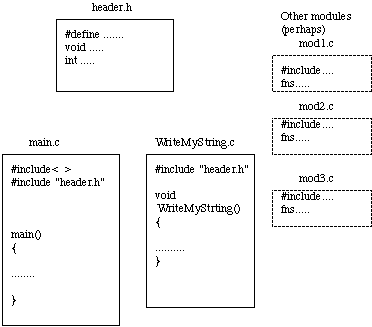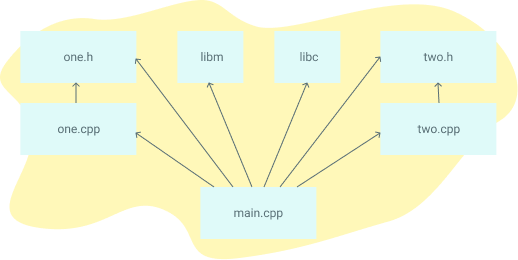

#HOW TO WRITE A MAKEFILE FOR MULTIPLE FILES HOW TO#
Here’s a summary created for SEO optimizations.G++ main.cpp -o main.exe -DSFML_STATIC -I F:\SFMLPrj\StarFirestc\Prefixes\include -L F:\SFMLPrj\StarFirestc\Prefixes\lib -lsfml-graphics-s -lsfml-window-s -lsfml-system-s -lopengl32 -lwinmm -lgdi32 -lfreetypeīut then when i include more files into the folder i don't know how to modify my Makefile to compile 2 or more files.īasically when i run my test file for the first time,i include SFML header into that test file so when the compiler(MinGW) runs,it looks into the Makefile and know that i've included SFML headers there.But when i make a new class in the folder(Game.h and Game.cpp) i put the SFML into the 'Game.h' file then include it in the test file. If you would like to read more about Computer Architecture, please use the tag filter and architecture category. This article is part of a Computer Architecture collection. Let me know if you have further questions. Figure 3: Makefile with Advanced Usage CC=g++ In step 3, Make performs actual compilation having resolved all directory names and moves to $(TARGET) rule to final linking. This specifies the output object file name as well as the directory association. In step 2, a pattern substitution is made using patsubst, replacing to create the concatenated file name bin/functions.o. Make executes the $(TARGET) rule in step 1 and as explained earlier, it moves to figure out what $(OBJ) means, in example 4. In Figure 3, we can see a Makefile which includes compiling binary files in a separate object directory because when you have many source files, compiling all object files to the main build directory is not the best idea.

$(CC) -o program $^ $(CFLAGS) Advanced Usage Figure 2: Makefile with Separated Compilation Steps CC=g++ After replacing, Make performs the link step and generates the binary. Again $^ is replaced with the first element on the right hand side of the colon. Make, moves to the first rule (“main”) to perform the final compile and link step. $< is replaced with the right hand side (this is to your right) variable name, and is replaced by the left hand side.Īfter the variable replacement, Make creates the object file by compiling using g++. In Step 2, Make replaces the symbols appropriately as shown. When met with functions.o rule, the second step begins ( Step 2 in Figure 2). Thus, scans through the rules to figure out whether there is a matching rule. Make meets with the need to build functions.o. In figure 2, when we run the command make, the main rule is executed ( Step 1 in Figure 2). In this example, we will see how we can separate out compilation steps for each object file. $(CC) -o program $(CFLAGS) Makefile with Step Compilation Example 2 explains how you can use multiple rules. CC=g++īut more often than not, you will find that you need to have multiple rules to compile a program binary and a test binary. Example 1 demonstrates how the compile and link command can be in one step using g++. In this tutorial, I will provide a step by step guide to build a fully equipped Makefile. Make sure to align your Makefile using tabs. In contrast, a Makefile only compiles the source files that have been modified since the last compile time saving compute time. However, when you have a complicated compilation process, retyping the compile command becomes cumbersome and it also recompiles all your object binaries (even the source files you did not modify since the last compilation). L flag can be used to specify additional library locations and you will have to use -l flag to specify which library needs to be linked (eg:-lpthread). If you have additional include files, -I flag can be used to specify the include directory containing. The command will compile each C++ source file and create object files. Usual compilation with g++ will involve a command as follows. This article explains how you can set up your own makefile for your C / C++ project.

Makefiles provide a way to organize build steps involved in C / C++ project compilation.


 0 kommentar(er)
0 kommentar(er)
